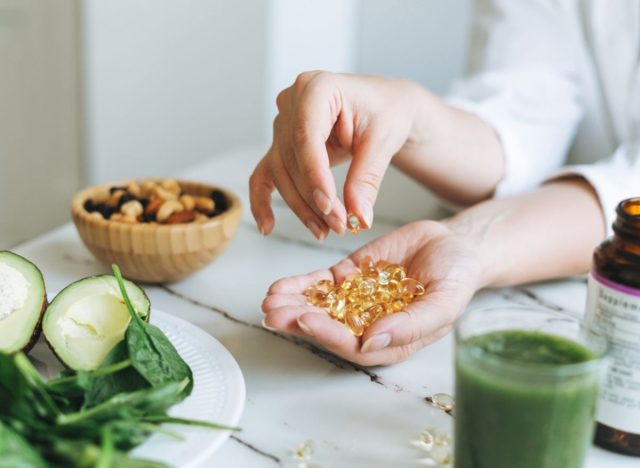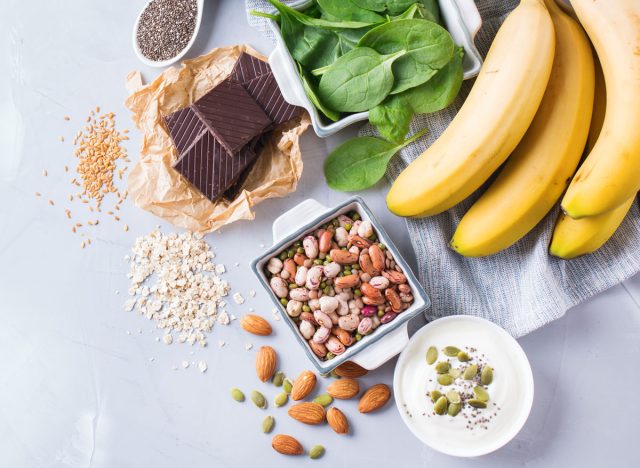It’s estimated that at least 40% of adults in the United States are deficient in vitamin D. Even more may be at risk of vitamin D deficiency during the winter months, due to shorter days and less sunlight in the northern climes.
Known as the “sunshine vitamin,” our skin produces vitamin D when exposed to sunlight. We also get it from food. It is an essential nutrient for strong bones, as most of us know. Your body needs D to properly absorb calcium and prevent osteopenia and osteoporosis.
Vitamin D is also important for many other reasons. Research published in The American Journal of Medical Sciences has associated D deficiency with greater risk of cardiovascular disease, including hypertension, heart failure and coronary artery disease. Insufficiencies of vitamin D have also been linked to diabetes, certain cancers, dementia, and premature death.
“In addition to immunity-boosting properties, vitamin D is extremely important in metabolic and hormonal optimization because it’s involved in insulin sensitivity,” says Florence Comite, MD, an endocrinologist and founder of the Comite Center for Precision Medicine & Health in New York and the Groq Health app. “In fact, despite its misleading moniker, vitamin D is a hormone.”
How to know if you’re low on vitamin D


Your doctor can prescribe a blood test to measure the 25-hydroxyvitamin D concentration in your body. It’s expensive, and the U.S. Preventive Services Task Force doesn’t support routine screenings. But the only other way you might know is by experiencing symptoms such as fatigue, bone pain, hair loss, depression, loss of appetite, or getting sick more easily. But those symptoms could be due to many other causes.
“Widespread deficiency is a vital issue I see in my clinical practice in men and women, so I prescribe vitamin D for the vast majority of my patients,” says Dr. Comite. “I’ve seen a lot of young women who are low on vitamin D because they’re not eating much dairy, because they’re erroneously concerned about a high fat content in dairy foods.”
How to get enough D
Vitamin D₃ (cholecalciferol) can be purchased over the counter. Vitamin D₂ (ergocalciferol), which requires a prescription, is often given to people who have trouble absorbing D₃.
About 20% of the population have a genetic variant that requires prescription vitamin D₂ to metabolize D in the body, according to Dr. Comite. Furthermore, the Institute of Medicine recommends that people ages 70 and younger get 600 international units (IU) of vitamin D daily, and 800 IU if they are over 70.
“We typically recommend 2,000 to 5,000 IU per day,” adds Comite.
READ RELATED: The Best Low-Impact Workout That Burns Fat All Over
If you or a close family member has kidney stones, ask your doctor for the proper dose before taking vitamin D supplements. Comite lowers the dose to 2,000 IU if there’s a history of stones.
Also, remember that vitamin D is fat-soluble, so vitamin D supplements should be taken with a source of fat for best absorption. And what about stepping outside in the sun for 60 minutes?
“In my experience, sun exposure doesn’t increase D levels much,” says Dr. Comite.
Food is another natural source of vitamin D, says Comite. Good sources are vitamin D-fortified milk, yogurt and other dairy products, and orange juice as well as egg yolks, vegetables like broccoli and mushrooms, and leafy greens like kale and spinach. Sardines and salmon contain good amounts of vitamin D. A 3.5-ounce can of sardines packs 24% of the daily value (DV), while a 4-ounce serving of salmon has 60% of DV. Here are some terrific Recipes to Get a Vitamin D Boost.
Make sure the D does its job


It’s one challenge to get enough vitamin D into your body, it’s another to make it useful. In addition to taking vitamin D with food containing some fat, other nutrients may help you get the most from vitamin D.
Recent research published in The Journal of the American Osteopathic Medicine demonstrated that vitamin D cannot be metabolized effectively if you don’t have sufficient magnesium levels in your body. While magnesium deficiency is not a widespread problem, diabetics and people who drink a lot of alcohol tend to be lacking in this important mineral.
Magnesium impacts all the enzymes that activate vitamin D in the liver and kidneys, the researchers say. You can take magnesium supplements. Also, be sure to eat leafy greens, nuts, bananas, yogurt, and fish; they are all good sources of magnesium to get the most from your vitamin D.
Jeff Csatari
editing Galvanized Media books and magazines and for advising journalism
students through the Zinczenko New Media Center at Moravian University in Bethlehem, PA. Read more about Jeff
Source:










